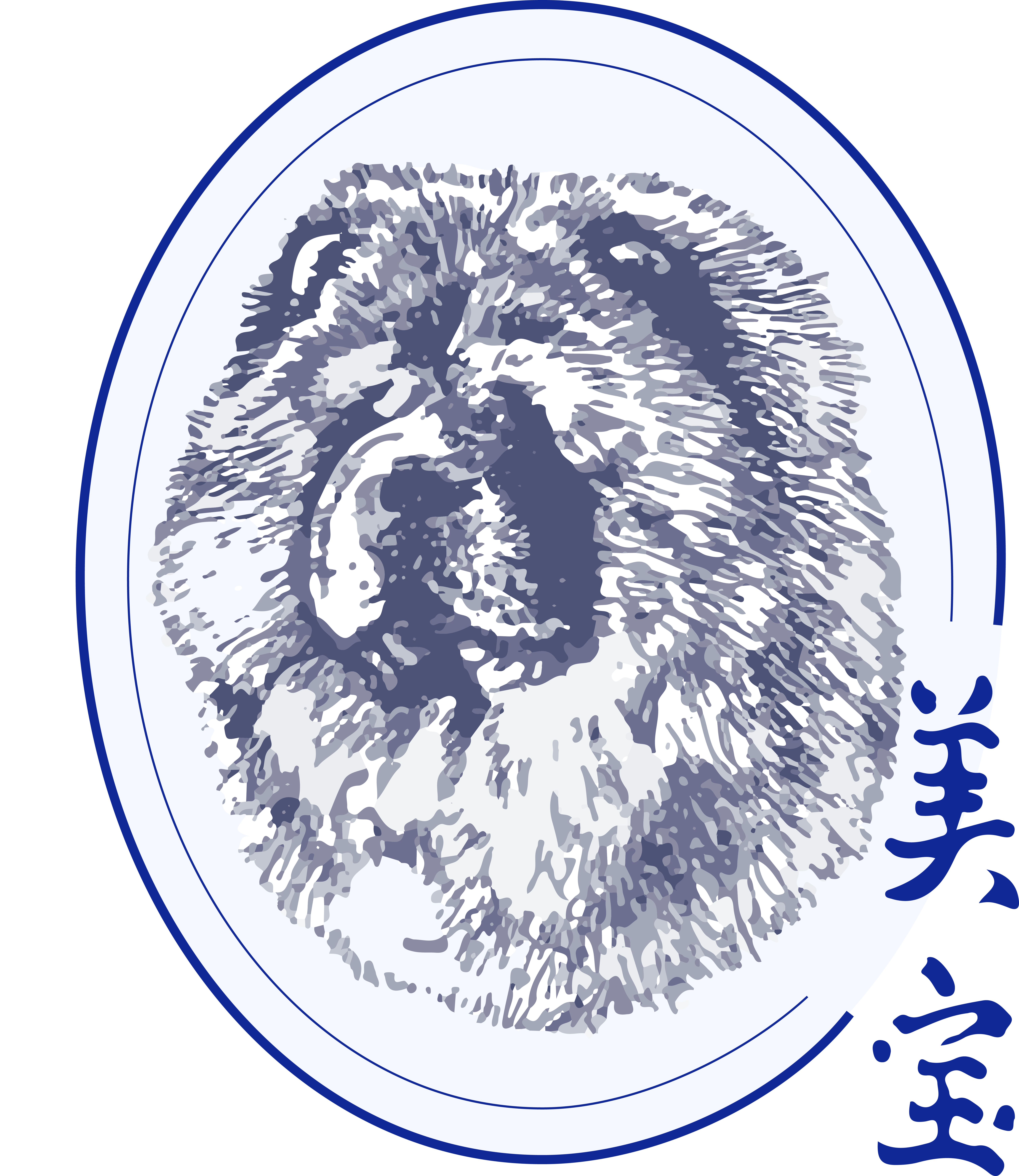25 Oct Smooth Chows As A Separate Variety
I believe the controversy about the smooth chow stems mainly from a lack of understanding of the hereditary make-up of both varieties resulting in an unfounded fear that crossing them would lead to impurity of the genotype. I we can set aside the romantic illusion that our Chows are somehow a species apart from all others, some have even suggested them to be an evolutionary derivative of a now extinct bear, than we can perhaps approach the issue logically and with pragmatism. Believe it or not chows are just another man made (purebred) variety of dog, and all dogs have the wolf as a common ancestor. In the case of our chows it most likely was the Canis Lupus Chanco variety. The point is that all 300 recognized purebred breeds through selective breeding and crossings of phenotypes were created by men for a specific purpose or function. It has been postulated by Professor Dr. Holmer many years ago that our modern chow was obtained through the crossing of the black Chinese Spitz and the red Tibetan Mastiff. Therefore the term “purebred” is not an absolute and only relevant to identifying a species whose ancestors were of unmixed decent since the recognition of the breed (A.K.C. definition). In the case of our chows this means only since 1895.
Historians tell us that early importations of chows from the Orient consisted of about 50% smooths and indeed the first chow ever exhibited in England was the smooth bitch Chinese Puzzle who won a silver medal at the Crystal Palace Show of 1880. Miss Ella Casella around the turn of the century bred and showed a number of smooths, and the more contemporary Ukwong Kennels always had at least one smooth bitch in their kennels. Since all our chows are related, and a quick perusal of all bloodlines show a fair number of smooths being used over the years it is safe to say that all our roughs carry the smooth gene. It is therefore not a matter of rough versus smooth but all of us learning to deal with this variety, hopefully in an objective and constructive way. Personal prejudice only serves to subtract from the breed total. One may dislike cinnamons, or blacks, big dogs or curly tails, the solution simply lies in avoiding them in one’s breeding program rather than trying to legislate them out of the standard as has been the case with the smooth variety in the U.S. and Canada until 1986. In tackling the question of a separate variety we first have to deal with the ambiguity of the term in AKC parlance. We note that 13 breeds are subdivided in two to eight varieties which are each individually represented at group level. They include Collies, Poodles, Beagles, Bull Terriers, Chihuahuas, Dachshunds, Fox Terriers, Schnauzers, Pointers, Retrievers, Setters, Spaniels and Welsh Corgis. On the other hand we have Chows (Rough Smooth), St. Bernards (Longhaired & Shorthaired), and Newfoundlands (Black & Landseer) with two distinct varieties which are not individually represented at Group Level. To make matters even more confusing we note that the three varieties of Dachshunds represented at Group Level are further subdivided into the standards and miniatures who, unlike the Beagles, Poodles, and Schnauzers, are not individually represented at Group Level and thus fall into the same category as the Chows, St. Bernards and Newfoundlands
Since AKC objects to further increasing the number of dogs competing at Group Level by subdivision of breeds in separate varieties, it is safe to assume that any effort to that effect will be unsuccessful, until such time that a determined effort to standardize characteristics and improve the quality of the smooths has been achieved. As this presents a formidable challenge it can only be achieved if enough hardcore fanciers can be found, ready to take up the gauntlet. At this stage it would be counterproductive to split the breed into two distinct and separate varieties, as the gene pool for smooths is still too limited. But down the road it would indeed be necessary to do exactly that, if fine tuning of the variety distinction is desired! An excellent case study can be found in the approach of Kennel Clubs outside the U.S. to progressively purify the different varieties of the Dachshund. Whereas the longhaired variety was obtained by crossing with longhaired Spaniels, the smooth and longhaired coats were separated by selective breeding long before recorded registrations. The wire haired variety was obtained more recently (1890) by crossing with harsh wire terrier coats. Originally crosses between all varieties was permitted to obtain sufficient breeding stock. However, unlike in the U.S. where these crossings still continue, Kennel Clubs elsewhere learned that these crossings did more harm than good, with the inevitable production of intermediate coats, conforming to neither coat standard, and uncertainty of coat texture for several generations. Does this not sound familiar? There certainly is controversy about the desired length of coat of the smooth. Indeed the 1933 edition of “The Dog Owner’s Guide” offers the following: “In the Smooth Chow the coat, instead of being long and open, is short and lies smooth and flat to the body.” I cannot agree more, but this type is exceedingly hard to find these days.
In conclusion I would suggest that separation of the varieties in competition at breed level should be targeted in order to promote graduation of individuals, to establish their quality within their respective varieties. Strict separation should be avoided, at least until sufficient numbers of smooths have been obtained. Only at that stage, will strict separation be required to benefit both varieties and eliminate the present intermediate coat types.


